Ultra-marathon, have you thought about running an ultra-marathon?
I have.
Scary.
But when I finished reading Born to Run by Christopher McDougall, I wanted to try an ultra-marathon. I even tried out huarache running sandals. If Tarahumara people can run for days, I could manage running 100k or even 100 miles.
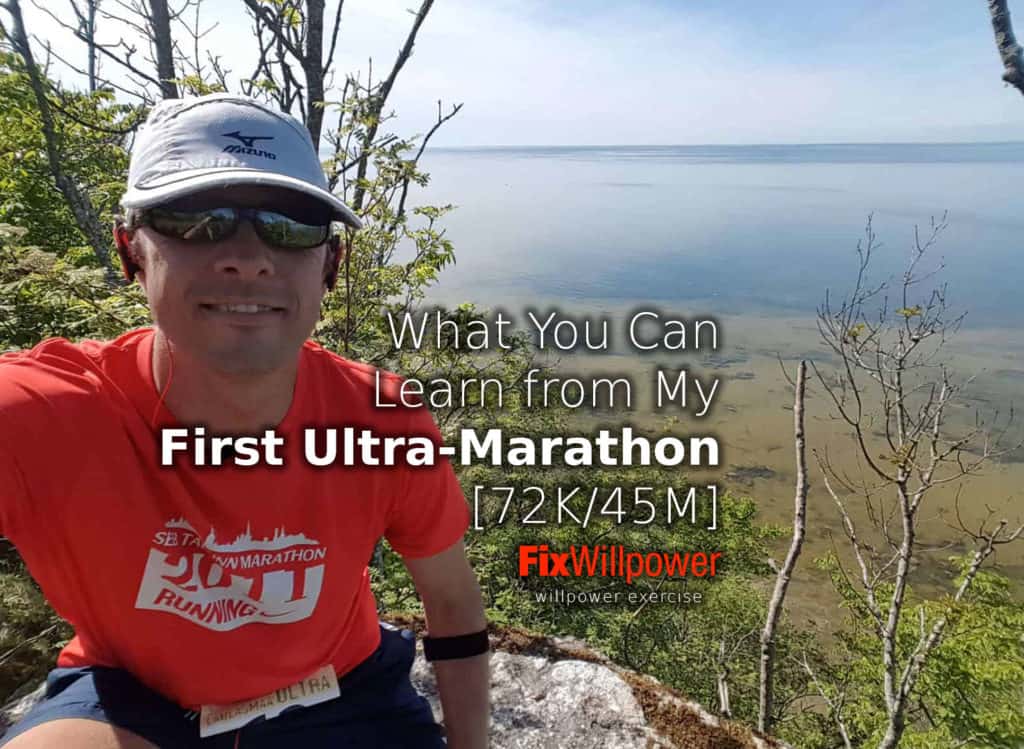
Ultra-marathon is anything longer than a marathon.
I have covered longer than marathon distances before. I have attended events where participants alternate between 5 minutes of running and 5 minutes of walking. On one of those events, I covered 52 kilometers. That’s 32.2 miles in American. In the end, I skipped the walking parts, so I could get faster to the finish.
But walking is not running!
Laulasmaa Ultra
Every June, there’s an event called Laulasmaa Ultra in Estonia. The great thing about the Laulasmaa ultra marathon is that you can run as much as you want. The event starts on Saturday morning and ends 32 hours later on Sunday. You can run up to 10 laps during that time. Each lap is a half marathon. 211 kilometers or 131 miles is the maximum distance.
A few weeks before the race, I figured I could run an ultra-run.
Here’s what you can learn from my first ultra-marathon: preparation, running, recovering, and other ideas.
But what distance to run on your first ultra?
105.5k or two-and-a-half marathons would be cool.
Has a nice ring to it.
But it takes a lot of time and the next day isn’t fun either. Maybe 84k? Two marathons back to back seem like a much more realistic plan.
I set a lower limit for myself. 63.3 kilometers or 1.5 marathons. That would be 3 laps in Laulasmaa ultra-run.
I didn’t put much more thought into the planning. I figured the result would be somewhere between 63.3 and 84.4 kilometers (1.5 to 2 marathons). Then I can say that I have run a legit ultra marathon distance.
As I had everything figured out, I signed up for the race a week before the event. Probably the last runner to sign up.
I even didn’t get the T-shirt :(
Just to give you a bit of context about my fitness level. I ran a marathon 6 weeks earlier in 3:35:09. 6 weeks after my first ultra-marathon I ran another marathon in 3:18:54.
Ultra-running training for my first ultra-marathon
I didn’t have any ultramarathon training or do anything different from my regular routine.
I run!
Usually 12 to 16 kilometers per day. Five times a week. A half marathon or up to 30 kilometers on the weekend. The weekly distance is usually around 50 to 80 kilometers or 32 to 50 miles.
When I run, I try to keep my heart rate below 150 beats per minute. My max heart rate is 195.
I loaded some carbs the night before the race. I ate two bananas and made a sandwich.
I figured there would be countless aid stations on the track, and I can satisfy my energy needs with their help.
Of course, if you want to have a pasta party with friends, you can do that. The amount of pasta consumed will not affect your result.
The notes I made before my first ultra-marathon
On the morning of the race day, I had come up with a bit more solid plan. I made notes to record my feelings before my first ultra-run. Later the memory would fade and the events of that day would influence the memories.
I have the challenge to write every day, so that’s what I did as part of my writing challenge.
Here’s what I wrote, before the start:
I want to run 72.3 kilometers. That’s 3 full laps and 3 consolation laps (3km each). I think 63.3k is no problem at all, and a little more on top of that shouldn’t be a problem.
The scary part:
- No willpower to finish. I quit and don’t achieve my goals.
- I usually run on the flat concrete road. Now there’s a trail and about 700 meters of ascent.
- It will take a lot of time to recover, and I waste several days being a little disabled.
- I will probably run for 9 to 10 hours. There are other things I could do with that time.
The fun part:
- Good weather and a gorgeous nature trail.
- Great company.
- I am achieving new heights in my running and an impressive result.
- Bragging rights!
Why do I do it? As you can see, there are more cons than pros.
Well, I must try it at least once.
Preparations before the start
It took me about an hour to drive to the event location.
I visited a local pharmacy to buy some Vaseline. More experienced ultra-runners gave me a tip that you should cover yourself with Vaseline. Vaseline will help prevent friction and blisters.
The weather was great, and I didn’t need much special ultra-running gear:
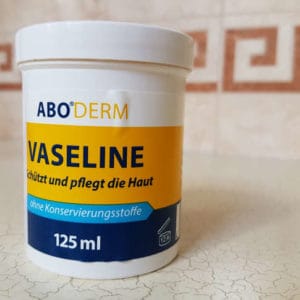
- Shorts
- Compression socks
- Running shoes (not really the “ultra-running shoes,” or as one guy put it, “I see you run with very cheap shoes”)
- A cap
- Heart rate monitor
- Headphones
- Sunglasses
- Samsung Galaxy S7
- Chip to track my progress during the race (from the event organizers)
Take only what you need. As I was running laps with aid-stations every few miles, I only needed the clothes on my back.
I had never used Vaseline. It was interesting to find out how it works. I put a lot of Vaseline on my feet, covered the nipples, and put some between the legs.
I tied my shoes and was ready to go.
Here’s how I tie my shoes for races.
The start of my first ultra-marathon
The start in this race is quite different from most other events. I told the time guy, “Umm, I’m gonna go now.” and he replied, “OK!”
There is a real start in this event. Most runners start together at 10am. But what I love about this event is that you can begin any time you want.
In the city where I live, I usually run the same route all the time. It has become about as exciting as watching paint dry. When I run in the city, I often entertain myself with audiobooks. During this run, I didn’t put anything on the headphones.
Only Endomondo announced the vital stats every 500 meters:
- Distance
- Elapsed time
- Pace for the last 500 meters
- Heart rate
The trail itself was entertainment for me.
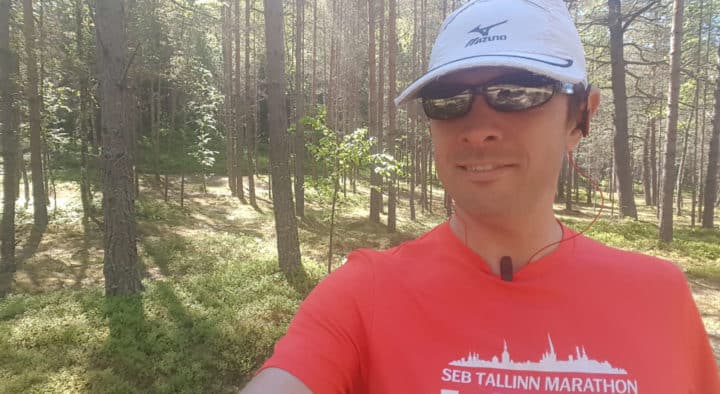
Always remember to clean the lens of the front-facing camera before taking a selfie.
4km
The first aid station. The people there were really helpful. At that station, I stopped and drank Coca-Cola. There were olives that I used to get some salt and minerals.
Before that aid station was a “nice” ascent.
Stairs.
The stairs took you from the river back up to the level where the waterfall started. The height was 10 or 15 meters (35-45 feet), and in the first 4 kilometers, that was nothing.
You take two steps at the time, and up you go.
Fast.
The Laulasmaa Ultra trail is incredibly beautiful, and the time of the year is the best you can have in Estonia. Everything is green, fresh, and growing. The weather itself was perfect for me, but maybe a bit warm for fast runners.

After the aid station, the route doubled back and went down the same stairs that you just used to come up to the waterfall.
Pro tip about going downhill. Don’t use the stairs. You can adjust the length of the step much better on the ground than on the stairs.
Next, I ran over the bridge to the other side of the river Keila. Running through the Keila-Joa park took me to the first natural ascent. That was probably the most complicated part of the whole trail — a 45-degree slope with roots and sand. The highest steps you had to take were close to half a meter or 20 inches at places.
I imagined what fun it would be on the third lap.
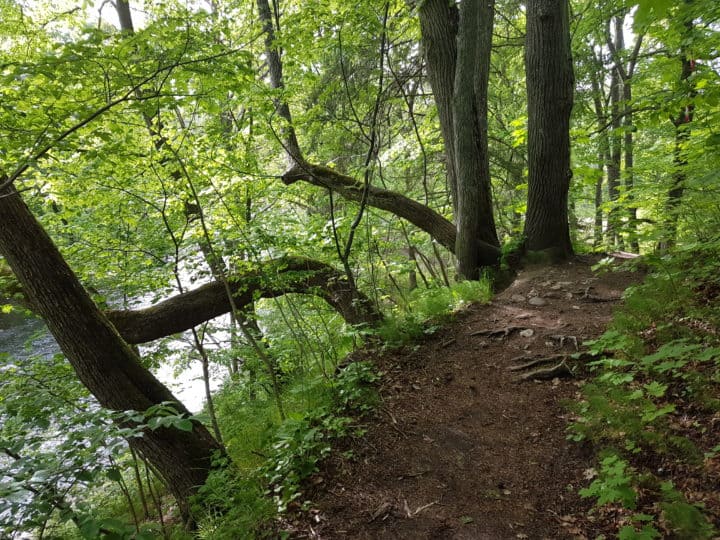
13 kilometers, 8 miles
Somewhere around 13 kilometers, I caught up with a friend and his partner who had started earlier in the morning. I slowed down a bit. They had already covered almost 35 kilometers. We talked for about one kilometer, and then I picked up the pace and went my own way.
Half marathon, 21.1 kilometers
I completed the first lap, and from now on, everything was familiar. I could divide my strength in a way that best matched the different trail segments. In the start and finish area, I ate some meatball soup. As I hadn’t loaded energy before the run, then it was necessary to put enough fuel in my body. A bowl of soup felt great after 21k.
The time for the first lap was 2 hours and 21 minutes. I was very cautious when selecting the pace for the first lap.
On to the next lap.
Marathon 42.2 kilometers
The second lap was uneventful. I felt wonderful because I ran the second lap at about the same pace as the first one, maybe a bit slower. My marathon time was slightly below 5 hours. Every system was good to go:
- I wasn’t tired
- Legs were fine
- Breathing was easy and slow
- There was no mental block to go on to the third lap
Now I started the Laulasmaa ULTRA part. Ultra-marathon is everything longer than a marathon.
Right from the start of the third lap, my heart rate went up. The heart rate was between 150 and 160. Sometimes it even exceeded the 160 beats per minute mark. I don’t know why, but the heart rate started to go up after I ate after the first lap. There was another jump in the heart rate right at the beginning of the third lap. I think eating a lot of soup at once was the reason for the unexpectedly high heart rate.
Motivation for the ultra-marathon
At the beginning of my third lap, I met a friend who was at the end of his third lap. He said there was no motivation left to go on. I figured that the organizers could put a big barrel labeled “Motivation.” Plain drinking water with maybe added lemon. Then add a warning label “Max 1 cup per lap!” It won’t hurt anybody, but for some, the placebo effect may improve results.

Ants
After I had completed two laps and things got a bit boring, then my brain decided to entertain itself. The runners seemed like ants. In the forest you can observe how ants run back and forth in an endless chain between a food source and the nest. That’s how other runners seemed after 50 kilometers of running.
A determined look on their faces with a steady pace back and forth.
As ultras are often run on laps of bendy roads, learn how to run faster by cutting all the corners.
One and a half marathons or 63.3 kilometers (39 miles)
The main thought in my head during the third lap was 72 or 84.
On the break before going to the third lap, my heart finally accepted that this is will not anytime soon. As my heart got tired, the heart rate dropped to between 145 and 155.
On the second half of the third lap, I went further than I had ever before, 52 kilometers.
After that, every step was a new personal best.
At the same time, I was constantly racking my brain if I should run 20 or 32 kilometers more.
There many pros and cons, but the cons of the longer distance won.
- The time was late.
- It will be dark, and I don’t have a flashlight.
- It started to get cold.
- Mosquitoes were coming out of their hiding places.
- There’s not much difference between 72 and 84 kilometers. It’s not 100k after all.
- I also started to get a bit tired.
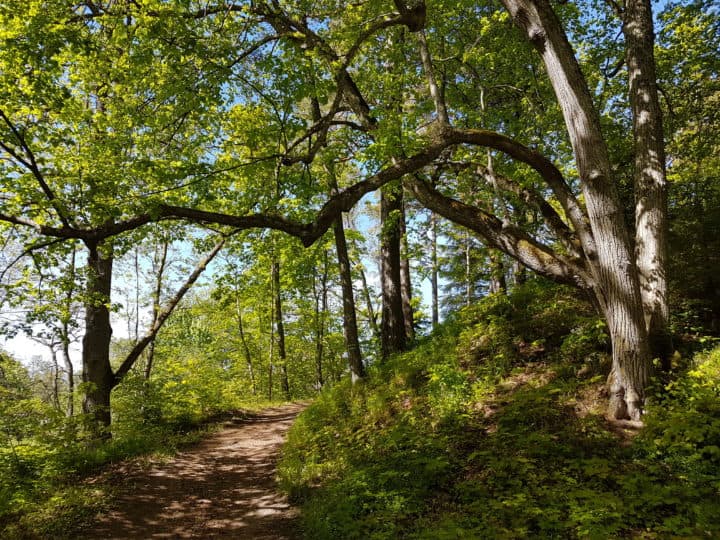
An interesting thought occurred to me when comparing the ultra-marathon with running on the treadmill. I usually run on the treadmill for 66 minutes and 66 seconds. It’s about the same number of minutes as I now had kilometers.
When I run on the treadmill, I think to myself, “Ahh… only 19 minutes left!” Running my first ultra-marathon, I thought, “Ahh… only 19 kilometers left!”
I completed the third lap in approximately 7 and a half hours. I decided not to go on the fourth lap that would take another 2 hours and 30 minutes. I’ll console myself with 9 kilometers, completing 3 times 3-kilometer consolation laps.
Of course, in some cases, you want to complete a race of 100 miles or Badwater Ultra. In those cases, make sure you are prepared to complete the whole race.
3X3km consolation laps to 72.3 kilometers
I rested after the third lap and went on to the consolation laps. My heart was tired. The heart rate had dropped to the level between 145 and 150.
The final 3 short laps were the most mind-numbing part of the event. (3-kilometer each). The finish was so close, and I crossed the actual finish line 3 times during that time.
Later that year, I ran 52 kilometers in an ultra-run where the lap was 6.6 kilometers. The trail was beautiful winter scenery and didn’t feel too mind-numbing.

Aid stations and nutrition during the ultra-run
There were 5 aid stations on the Laulasmaa Ultra trail. Two at the turnaround points at both ends of the route and three stations along the course that you visited twice on each lap. So, you had an aid station almost every 3 kilometers and could even skip some of them.
There were awesome and helpful people in the aid stations. The mostest awesomest part was that some of those people had real beer. I think a couple of gulps of beer per lap was really motivating.
Besides beer, I consumed Coca-Cola and kali. Kali is an Estonian beverage made from rye bread, a bit like sweet beer, but non-alcoholic. I mostly use kali for water and sugar. For more substance and minerals, I ate pickles and olives. I ate bananas in the second half of the run.
I also had an ample supply of gels, but the nutrition from the aid stations was good enough and much tastier. For some reason, they don’t put beer in those gels.
Finish of the ultra-run
Finish!
72.3 kilometers! 44.92 miles was what I had in me.
8 hours 32 minutes and 7 seconds!
Average pace 7 minutes and 7 seconds per kilometer or 11 minutes and 27 seconds per mile.
Awesome! I met all the goals I set for myself.
I ran my first ultra at 2 minutes slower pace than the marathon 6 weeks earlier. That marathon was an easy run for me. The first ultra was also relatively easy.
The feeling after the finish was about the same as finishing a marathon. My condition was good enough that after resting a bit, I thought I could run more.
I ate risotto and cake. Washed it down with juice, coffee, and water.
The interesting thing about eating while running an ultra was that I gained weight during the event.
Later, the organizers gave me a diploma, and a medal made of stone.
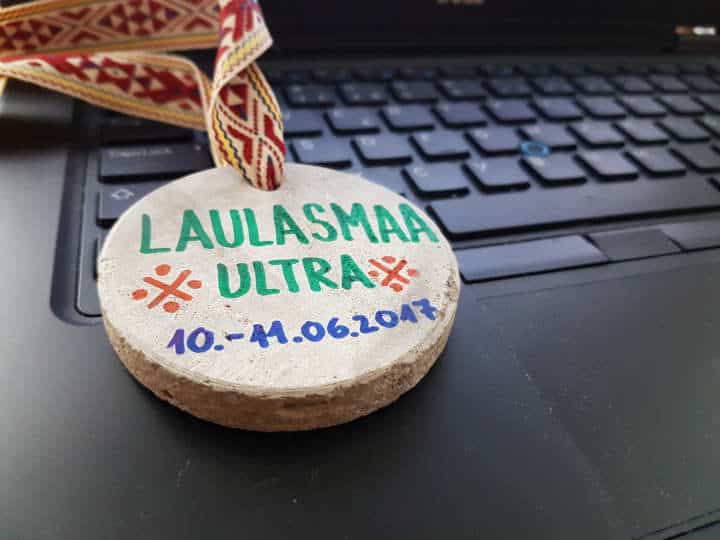
Recovery after my first ultra-run
I don’t stretch.
I don’t do massages.
I don’t like it.
I just like to run.
The first day after the run was much better than I expected. The thighs were a bit stiff, especially the muscles that work when you break during the descents.
The second day after the event was probably the stiffest. I wasn’t too friendly with the stairs that day. My thighs let me know on every step I had had a long run. But looking back to other races, the situation was similar to my first marathon in 2011.
The third day brought relief. Stiffness in the legs was almost gone, and the fluidity of motion returned.
On the evening of the fourth day, I went out for a run. Slowly, carefully, 10 kilometers with a heart rate below 129. Legs were fine! I still felt some stiffness in the “downhill braking” muscles.
Future plans
Should I run more ultras?
I don’t think I can do it very often.
Running an ultra-marathon will take a lot of time, even in a shorter form I described above. And then there’s a lack of productivity during the recovery period.
Putting it all together, it seems that once or twice a year would be a reasonable frequency.
What is one ultra?
Another aspect is the distance. I think you should run the whole ultra in one go with some short breaks for resting.
I don’t think you can consider it one run if you take an 8 to 10-hour break for sleeping.
If you run 50k today and 50k tomorrow, then you can’t consider that a 100k ultra-marathon. My Endomondo has recorded more than 18,000 kilometers since 2011. I can’t say I ran a 18000k ultra-marathon.
After I finished my first Laulasmaa ultra, I figured that the next goal should be 100.
First, 100 kilometers and then maybe 100 miles. I can probably do 100k during the next year’s Laulasmaa ultra. However, there will be another important ultra-run in Estonia in six months. I could be ready for 100k at Haanja 100.
The distances beyond 100k start to be longer than a day. 100 miles could take 20 to 25 hours, depending on the terrain. A little after 100 miles comes 168.8 kilometers, which is 4 marathons back to back.
24 hours seems enough. Beyond that, the time needed for training and the events would take an unreasonably big part of my life.
Famous ultra-marathons
However, some ultra-races are considerably longer but still tempting.
Spartathlon – this is the mother of all marathons in Greece that’s 245 kilometers or 152 miles. Looking at the 8 hours and 32 minutes I spent on 72 kilometers isn’t very encouraging. You must complete the first 81k of the Spartathlon in 9h30m. Doesn’t seem very realistic now.
Badwater Ultra – 135 miles from Death Valley to the top of Rocky Mountains. The world’s toughest foot race, they call it. It’s nuts! And you have to win the entry.
PS Little did I know, when I wrote this, that my 100k run was just 10 weeks away.
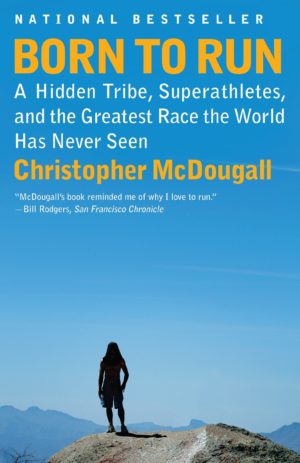
![Read more about the article Indoor Marathon [167 laps]: Why Cut Corners? To Run Faster!](https://fixwillpower.com/wp-content/uploads/tondiraba-indoor-marathon-429x314.jpg)


My first ultra was 50k. It’s just a bit longer than a marathon and thus easy to do. But it leaves you wanting for more.